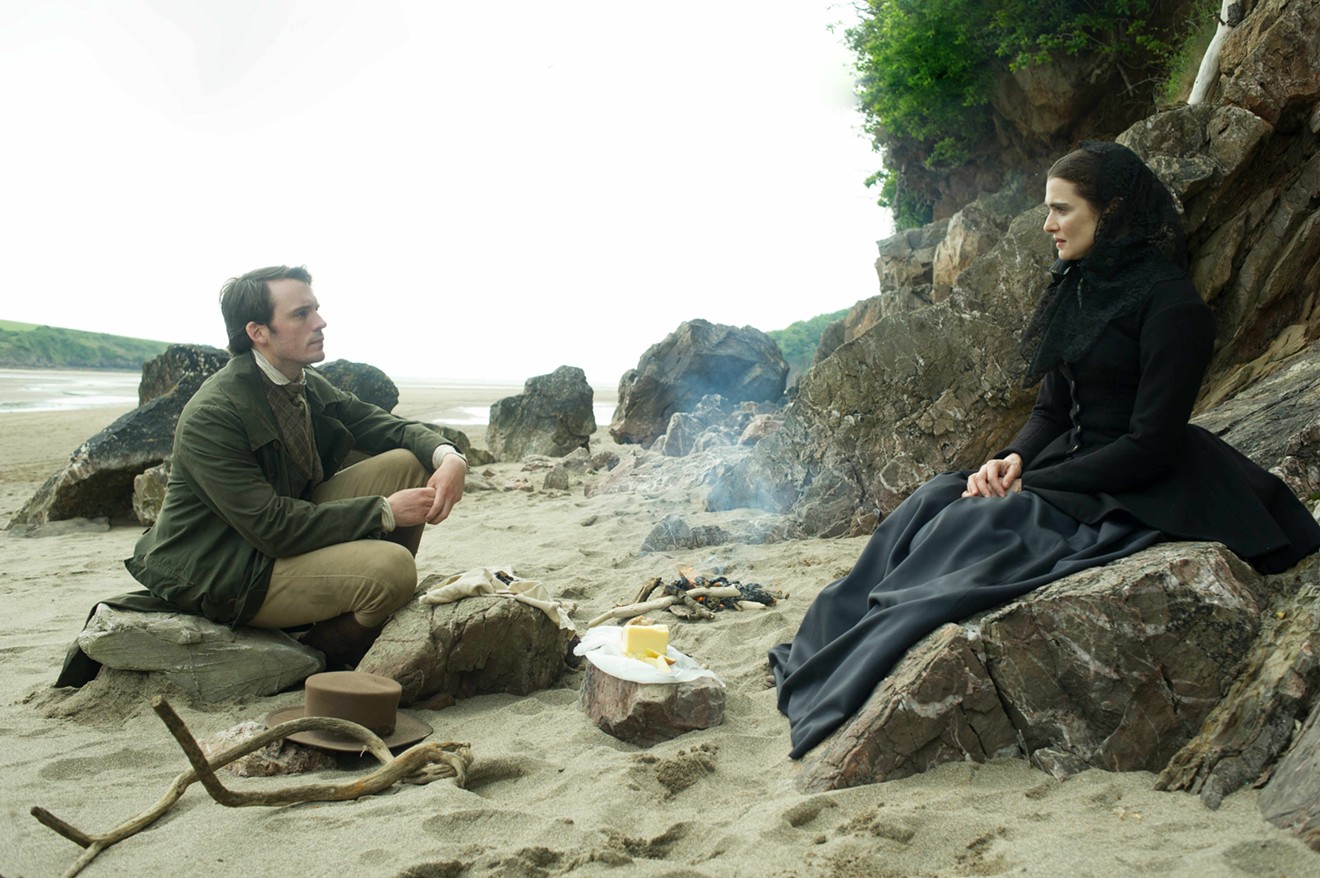The trailer for Henry Koster’s 1952 adaptation of My Cousin Rachel channels hysteria as the voiceover asks, “Was she woman or witch? Madonna or murderess?” Unfortunately, the film itself proved far tamer than the marketing suggested. The novel’s author, Daphne du Maurier, who also penned The Birds and the psychological thriller Rebecca, distanced herself from the project when she saw that 20th Century Fox planned to neuter her moody, mind-bending scenes and infuse them instead with romance.
Today, the late author would likely lick her lips in excitement for the second film version of her masterwork, this time from director Roger Michell and starring Rachel Weisz. Tense and at times downright frightening, My Cousin Rachel tells the story of an irresistible woman whose charms take down the male wing of a family, driving its members to madness. At least that’s what seems to be happening.
In fast-moving scenes, we enter the young life of self-possessed orphan Philip Ashley, who is cared for by his adult cousin Ambrose, circa the late 1800s. (Sam Claflin plays both Ambrose and the grown Philip; Austin Taylor and Louis Suc play Philip as a boy.) As the two goof off in church, Ambrose espouses the virtues of staying a bachelor. “Never had much need for women!” the older man gloats.
Before long, Philip is a handsome grown man himself, and Ambrose, taken ill, is on his way to Italy to convalesce. Then two letters from Ambrose arrive in quick succession: one announcing his marriage to the “radiant, good” Rachel, and the other claiming that this Rachel is trying to kill him. Philip rushes to Italy to save his pseudo-dad. But he’s too late — Ambrose is dead and buried, and Rachel has moved away.
We must wait to meet our anti-heroine, who remains a topic of incessant town gossip — her appetite for sex, her adoration of beautiful things. Did she really marry Ambrose for his money and kill him? Eventually, Rachel comes to Philip’s home in England to sort out finances and contracts, but Michell teases her arrival, focusing on the tempestuous mood swings of Philip, who broods by firelight as he obsesses over how fat Rachel must be, how ugly she surely is, to anyone who’ll listen.
Their first encounter is a taut meeting for tea in Rachel’s quarters. The camera frames Weisz’s poker face — partly obscured by a gauzy black veil — in extreme close-up, savoring her enigmatic smiles as she sips from one of her tizons (infused teas that she encourages Philip, throughout the film, to drink for whatever ails him). Witchy, eh? But Philip — who until this point has acted like a “Proud Boy” MRA intent on negging women — nearly loses the use of his limbs and mouth upon seeing Rachel; she’s charming, funny, every bit his intellectual equal. She’s everything Philip has been told all his life a woman couldn’t be.
Soon his adoration turns to a kind of madness. When Rachel gives him her attention, he’s more than ready to forget Ambrose’s letter accusing her of murder. When she ignores him, he lashes out, ransacking her room for clues of her unfaithfulness, trailing her through town like an unhinged stalker. But whether his loss of control is from the copious tizons Rachel feeds him or from his own inability to remain a respectable human being in a woman’s presence remains up in the air.
If Rachel is indeed a sorceress, she’s a good one. In one scene, Philip makes fun of her tizons, calling her a witch, scoffing as he asks her if she’s gone so far as to make one for women in childbirth. “And why not?” she says, stopping him short. “Do you think it’s their destiny to suffer?” Koster’s 1952 adaptation of this story explicitly answers the question of whether Rachel is woman or witch. Michell’s suggests that the two aren’t mutually exclusive — and that neither is bad.
[
{
"name": "Air - MediumRectangle - Inline Content - Mobile Display Size",
"component": "18478561",
"insertPoint": "2",
"requiredCountToDisplay": "2"
},{
"name": "Editor Picks",
"component": "16759093",
"insertPoint": "4",
"requiredCountToDisplay": "1"
},{
"name": "Inline Links",
"component": "17980324",
"insertPoint": "8th",
"startingPoint": 8,
"requiredCountToDisplay": "7",
"maxInsertions": 25
},{
"name": "Air - MediumRectangle - Combo - Inline Content",
"component": "16759092",
"insertPoint": "8th",
"startingPoint": 8,
"requiredCountToDisplay": "7",
"maxInsertions": 25
},{
"name": "Inline Links",
"component": "17980324",
"insertPoint": "8th",
"startingPoint": 12,
"requiredCountToDisplay": "11",
"maxInsertions": 24
},{
"name": "Air - Leaderboard Tower - Combo - Inline Content",
"component": "16759094",
"insertPoint": "8th",
"startingPoint": 12,
"requiredCountToDisplay": "11",
"maxInsertions": 24
}
]











